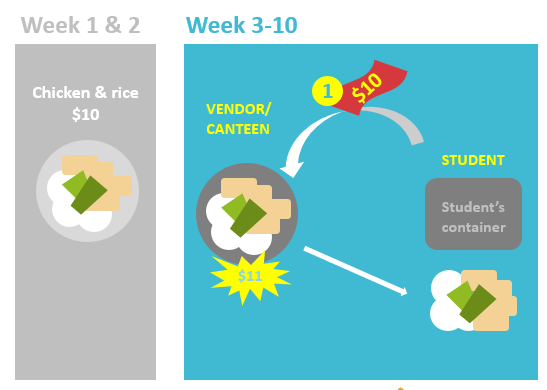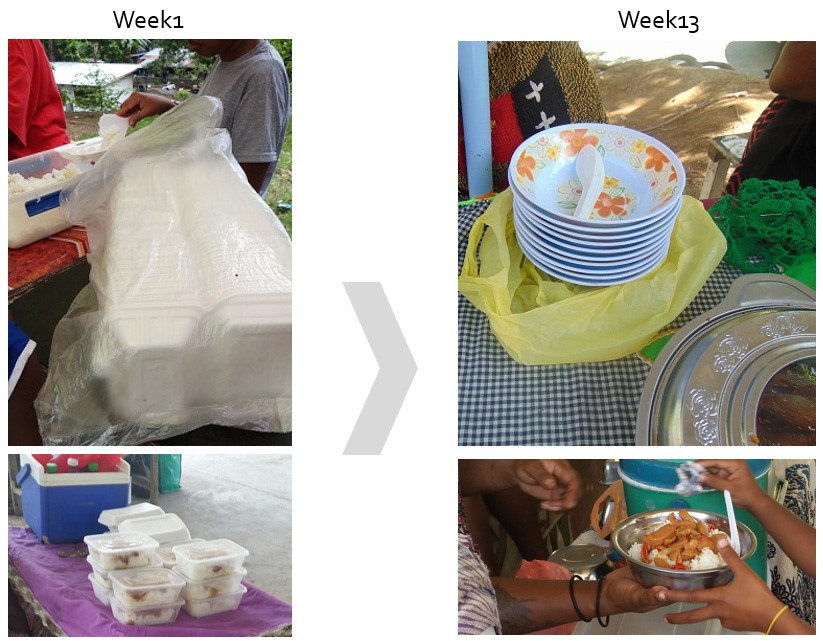A deeper look at the lessons from our behavioral insights-based waste management initiative
Plastic waste is a huge issue in the Solomon Islands capital Honiara. In October 2018, the United Nations Development Programme (UNDP) Office in the Solomon Islands (SOI) won funding from UNDP’s Global Innovation Facility to design a behavioral insights-based intervention that could help address the waste management challenges in the city. What was meant to be a four-month long initiative to design and implement a rapid prototype, turned into a one-year journey, culminating with a Lesson’s Learned workshop on October 29, 2019 in Honiara. Having participated both in the kick-off, as well as in the wrap-up of the initiative, I am taking five key lessons away for myself.
1. When venturing into a new policy area, expect to pivot fast and hard
The Office originally received the innovation funding for a proposal that would “nudge the private sector to create recycling businesses that address waste management”. The idea was to explore how UNDP could encourage entrepreneurs to tackle waste through profit recycling activities. At the time, however, this was a new policy area for the Office and there was a lot to learn. Once the innovation initiative team dug deep into the topic, it became clear that a meaningful recycling operation on a small island like Guadalcanal is just not feasible. Research by the Ministry of Environment, Climate Change, Disaster Management and Meteorology (MECDM) and the Japan International Cooperation Agency (JICA) concluded that container deposit legislation (as is in place in Australia) for plastic bottles wouldn’t work in Honiara, and an exploration of pyrolysis (turning plastic into fuel) left the team with many uncertainties, as the economics of it in the Solomon’s was unstable, and didn’t allow for a strong enough hypothesis that would get partner buy-in for a test. With the Behavioral Insights Team Australia on board, the SOI team then zoomed out to identify other potential entry points, and after extensive consultations, the team eventually honed in on schools. More specifically, how to nudge school towards becoming plastic-free by addressing its use of food containers. This ‘Schools Rethinking Plastic’ initiative was very different from our original idea, which is fine. It’s something to expect when looking to address problems in a space one is not too familiar with.
2. Behavioral Insights initiatives take time
We originally envisioned the project to last four months, but it eventually turned into 12 months. There were two main reasons behind this and one is that the systems for waste management in the waste cycle were not working effectively: the waste collection system was over-stretched, and there is no recycling system (apart from aluminum and some other non-ferrous metals), and with China’s ban in plastic waste import from 2018, the business case for exporting waste for cash had just fallen apart. The process of identifying what existing system UNDP could test an intervention on, took a long time. The second reason for the delay was that Behavioral Insights initiatives involves people, lots of them, and that engagement takes time: (1) to consult stakeholders and experts to learn about the matter at hand which is a pre-requisite for (2) identifying and selecting potential interventions with Behavioral Insights (BI) experts, after which one (3) designs and implements the BI trial with all the stakeholders involved, including (4) enlisting people to collect and aggregate data about the trial. Engaging partners, contractors, stakeholders and research subjects at every step of the way inevitably results in delays. In our case, this included delays in signing contracts with vendors, lobbying government ministries for their support, enlisting schools to participate, and accommodating school holiday schedules and existing commitments by partners. Again, all this is fine, one just needs to account for it upfront.
So, what are some of the takeaways with regards to the substance of waste management? What did we learn about creating plastic-free schools?
3. Interventions need to be designed together with the beneficiaries, who needs to be in the driver’s seat
In a sense, this is just a flavor of the generic and eye-roll inducing lessons learned of every development project, which is to “include all stakeholders from the beginning of a project”. The final report is expected to show the findings and analysis. But the fact of the matter is that engagement turned out to be key in this initiative. The project trialed the introduction of re-usable food containers in five different schools, and tested two different schemes:
(A) A Refundable Fee Scheme in which the team observed the baseline behavior when the school vendors gave out food for SI$10 in single-use containers for 2 weeks, and then for the remaining eight weeks used re-usable bowls at $1 premium which the students would get refunded as they returned the empty bowl.
(B) A Discount Scheme in which students who brought their own containers would receive their lunch at $1 discount. It turned out that both schemes worked equally well. The initiative was most successful where teachers, had been closely engaged throughout the project in communicating
the initiative to peers, selecting the type of containers used, purchasing the containers, imprinting them with the school logo, etc,. For example, in schools with strong leadership, students, vendors, teachers and parents talked about the initiative. This naturally created some noise that even reached the ears of even government officers who were parents of the participating schools. Bottom-up proved to be key. However, in schools where interest, commitment and engagement in the initiative were low, hardly any reusable containers were used towards the end of the trial.
4. The younger the target group, the more likely they are to adopt the plastic-reducing schemes
One result that clearly stood out was that Kindergarten and Primary School kids were eager to adopt the new scheme, bring their own containers or purchase containers from the schools, while Secondary School kids were more lackluster to bring their own containers, as well as to forfeit purchases of junk food in single-use wrappings. When it came to getting the food they wanted, concerns about plastic waste ranked much lower on their priority list for teenagers. The same teenagers also refused to have their mothers pack lunch for them, as that was perceived to hurt their status when everyone else is buying lunch. For one, this seems an obvious entry point for further testing, to find out what could change their minds regarding perceived status issues and the importance of avoiding plastic packaging. But it also raises the interesting question of what will happen to those kids who grow up with plastic-reducing schemes as “the new normal”. Will they keep these habits as they turn into teenagers, and pay more attention to reducing waste than their secondary school classmates of today? It would be interesting to pursue this down the road and revisit the same students 2-3 years from now.
5. Conducting a BI trial creates positive secondary effects
Finally, what surprised us was the extent to which organizing and conducting this trial created larger awareness gains within the community of schools. Food is an important everyday thing in the Solomon Islands, and it’s a source of enjoyment. So, when engaging the schools, the discussion about school lunches became a conversation not just about plastic packaging, but about health, nutrition and hygiene as well. It got the attention of the teachers regarding their students’ habits, as well as the Ministry of Health who had earlier campaigned for more nutritious food at schools, and it opened the door for additional partners to be engaged and activities to be trialed. Merely planning and conducting this prototype had increased awareness amongst teachers, students, parents and food vendors alike. Some teachers stopped propping junk food on their desks in front of students, some vendors educated others about plastic waste, and many of the schools became notably less littered with rubbish than before. All these effects were not directly intended by the trial but emerged as an indirect result of it. When designing Behavioral Insight initiatives like this, we need to identify entry points where we can get the most leverage in terms of such network effects (such as parents being influenced by students) and being ready to build on these secondary awareness effects and turn the newly changed minds into new partnerships going forward.
One piece of a portfolio of experiments
The most important insight for me from this one-year initiative, however, is a point that underpins the inception of the UNDP Accelerator Lab: We cannot address a systemic issue with a single intervention targeting just one node of the system, using just one methodology. As UNDP in the Solomon Islands embarked on this initiative, it came to understand the larger ecosystem of plastic waste in the Hapi Isles, from the import of plastic products to their use, re-use and disposal, and how limited the options for recycling or exporting left-over waste abroad are. Targeting just one node (plastic-consuming schools) and from just one specific angle (behavior) will never by itself solve the problem.
However, as part of the Global Accelerator Lab network, this one trial is just one of many experiments on waste management that the 60 Labs across the world are conducting. By injecting the learnings from this experiment into our global learning network, we hope that we as UNDP can grow our insight into what works well when dealing with plastic waste and combine our distributed insights across offices into new initiatives that can target the system of plastic waste in countries. UNDP in the Solomon Islands certainly plans to develop a follow-up project which can take waste management to the next level, building not just on the lessons from this trial, but on the insights of other Accelerator Lab trials as well.
If you are embarking on similar innovation experiments to tackle the issue of waste management in your country, and want to know more, don’t hesitate to contact us at jiye.suh@undp.org or johannes.schunter@undp.org.

 Locations
Locations





